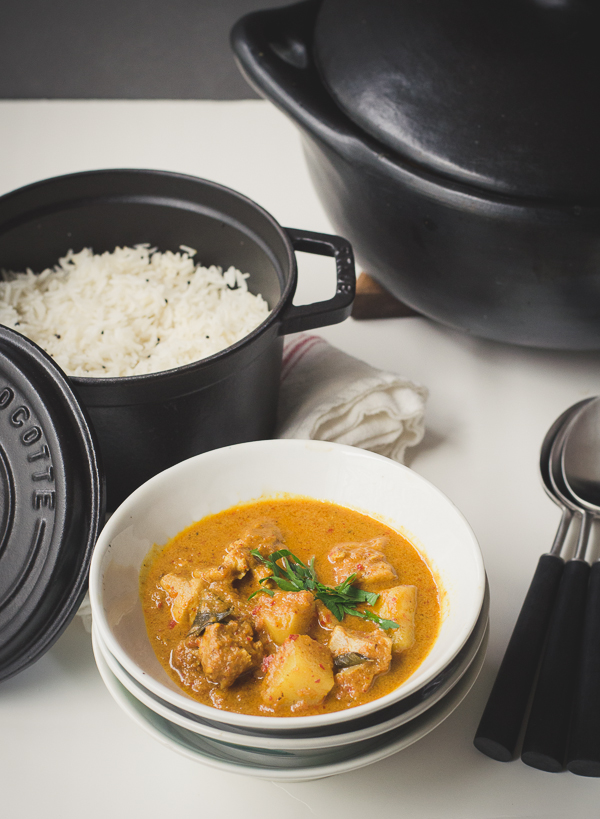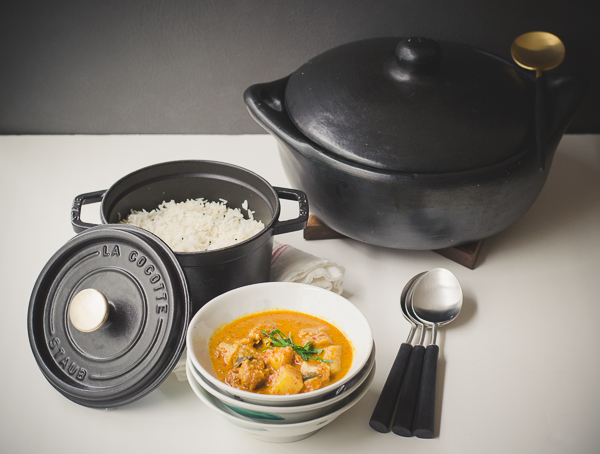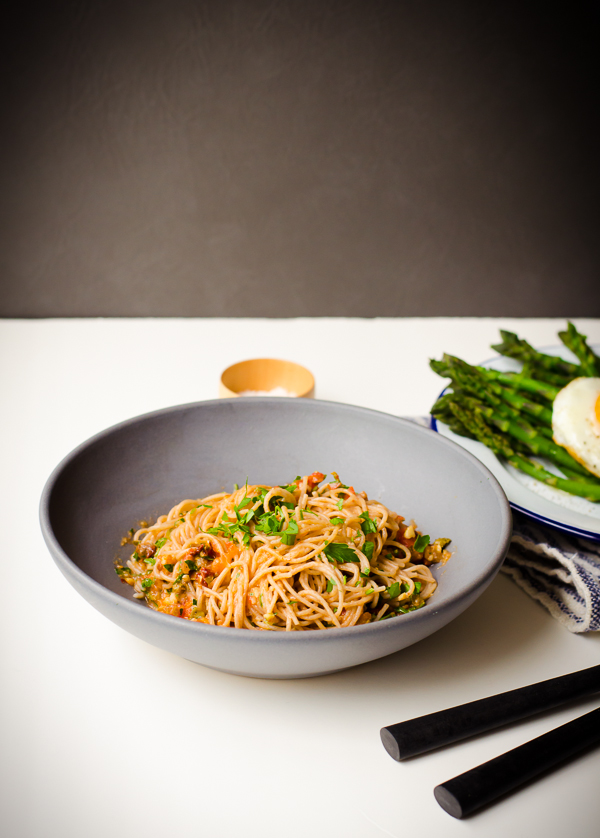My great-grandmother was a noodle hawker who made the best chicken curry laksa in the world (in my own very small world, she was a legendary cook) and my mother's own interpretation of this classic Malaysian dish is a phenomenal second. I therefore, am blessed with the advice of two marvelous cooks on making the perfect Malaysian chicken curry - always use candlenuts, lemongrass and curry leaves, and always use the best chilies you can find. I like using Korean chilies because they resemble Southeast Asian chilies the most, the South American/Mexican kind tend to have thicker skins that do not blend well. In a pinch, you can use gochugaru (Korean dried chili flakes) - about 1/4 cup of gochugaru soaked in 2 tablespoons water will yield about 25 dried chilies.
My mother uses Babas curry powder which she swears differs completely from your regular Indian curry powder (she lugs a whole boxful of Babas in several varieties every time she visits), but in case you have no one to bring you that perfect curry powder from half-way across the world, my experience tells me that a good Madras-style curry powder that contains no garlic or onion powder works equally well.
I realize after my spiel about authenticity that a food processor and boneless/skinless thighs may not help my case, but it does make things somewhat easier to chuck everything in a processor than grinding away on a mortar and pestle (and honestly, it really doesn't make an ounce of discernible difference). Please use bone-in chicken cut into small pieces if you can, it really does make for a much tastier dish - I only use boneless/skinless thighs because they defrost and cook really fast. I've adapted the recipe for a quick dinner, though it still takes about 90 minutes total from start to finish.
Low FODMAP Malaysian Chicken Curry
Makes about 6 servings
Curry base
2 medium carrots (about 5 oz. total)
1 small daikon radish (about 3 oz.)
1 small fennel, fronds removed
1 thumb-sized ginger, peeled
3 candlenuts (or sub. macadamia nuts)
25 dried Korean chilies, soaked in hot water for twenty minutes then discard the water
2 tablespoons ghee (if going dairy free, sub with equal amount avocado oil)
2 tablespoons coconut oil
1 tablespoon hot curry powder
1 teaspoon asafetida
2 stalk lemon grass, cut into thirds
10 curry leaves
20 oz. coconut milk
1.5 lbs boneless, skinless chicken thighs, cubed
4 medium Yukon gold potatoes (about 1.25 lbs), cubed
2 teaspoons coconut sugar (or regular brown sugar)
Salt to taste (about 2 - 3 teaspoons)
Blitz all the curry base ingredients in a processor until very fine.
Heat the ghee and coconut oil over medium heat and add the curry base, curry powder and asafetida. Fry until the mixture is fragrant and slightly golden, about 20 minutes. Add coconut milk, lemongrass and curry leaves - bring to a gentle simmer for a few minutes.
Add chicken and potatoes. Simmer, covered for about 25 - 30 minutes until potatoes are soft but not mushy. Stir in the sugar and season with salt to taste. Serve with basmati rice cooked in ghee and black mustard seeds.
---------------------------------------------







